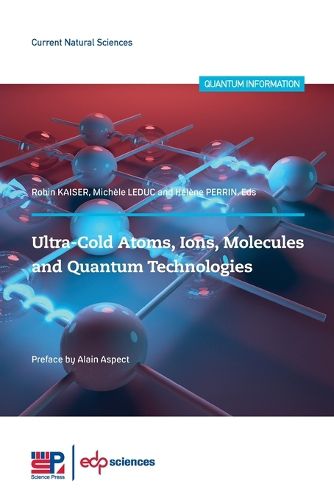Readings Newsletter
Become a Readings Member to make your shopping experience even easier.
Sign in or sign up for free!
You’re not far away from qualifying for FREE standard shipping within Australia
You’ve qualified for FREE standard shipping within Australia
The cart is loading…






Physicists know how to produce gases at a few billionths of a degree above absolute zero. The cooling methods apply not only to atoms but also to ions and molecules. This field of research has three times been awarded the Nobel Prize.
The field experienced remarkable growth when experimentalists learned how to vary at will the interactions between particles, trapping them with optical tweezers or in optical gratings with adjustable geometry. Artificial crystals made of atoms or molecules can be built to simulate the structure of matter and elucidate some of its magnetic properties, hopefully contributing to the understanding of high-temperature superconductivity.
The phenomenon of quantum entanglement is the basis for new devices for the storage and transmission of quantum information. Spectacular progress is constantly being made in metrology. For example, ultra-cold atom or ion clocks measure time to better than one second over the lifetime of the Universe. New types of industrial gravimeters and gyroscopes are improving the sensitivity of seismology and navigation in space.
In addition, the extreme precision of the measurements allows tests of the fundamental laws of physics, such as quantum electrodynamics, Lorentz invariance or possible variations of the fundamental constants. The field of ultra-cold particles has now reached the stage where it provides insights in the fields of condensed matter, chemistry and even cosmology.
$9.00 standard shipping within Australia
FREE standard shipping within Australia for orders over $100.00
Express & International shipping calculated at checkout
Physicists know how to produce gases at a few billionths of a degree above absolute zero. The cooling methods apply not only to atoms but also to ions and molecules. This field of research has three times been awarded the Nobel Prize.
The field experienced remarkable growth when experimentalists learned how to vary at will the interactions between particles, trapping them with optical tweezers or in optical gratings with adjustable geometry. Artificial crystals made of atoms or molecules can be built to simulate the structure of matter and elucidate some of its magnetic properties, hopefully contributing to the understanding of high-temperature superconductivity.
The phenomenon of quantum entanglement is the basis for new devices for the storage and transmission of quantum information. Spectacular progress is constantly being made in metrology. For example, ultra-cold atom or ion clocks measure time to better than one second over the lifetime of the Universe. New types of industrial gravimeters and gyroscopes are improving the sensitivity of seismology and navigation in space.
In addition, the extreme precision of the measurements allows tests of the fundamental laws of physics, such as quantum electrodynamics, Lorentz invariance or possible variations of the fundamental constants. The field of ultra-cold particles has now reached the stage where it provides insights in the fields of condensed matter, chemistry and even cosmology.